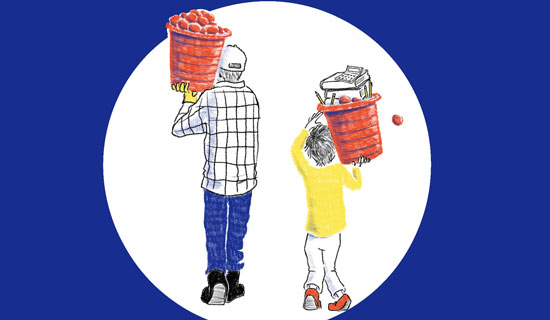KEY WEST — When the bell rang at the end of a recent Thursday at Horace O'Bryant School, Lamesha Portier was stationed with a cart in the courtyard. It was laden with bags containing cereal, milk and juice — plus, that night's dinner: tacos with rice and beans.
Heading into weekends, the bags are even bigger.
"Friday bags, we put about four or five breakfasts and then, like, three lunches and suppers, and milk and juice," she said.
It's long been true that some students who attend Monroe County schools struggle with not having enough food to eat, and COVID-19 has made the situation worse. Educators say the pandemic also has led to new solutions for student hunger.
When schools first closed last spring to slow the spread of the coronavirus, the district began delivering meals to families along the school bus route. Now, in addition to providing breakfast and lunch to students, schools are sending kids home with food, to get them through weekends and holidays.

Denise Santiago has spent a lifetime at Horace O'Bryant, becoming principal last year. She attended the school herself and then started her career there as a teacher 33 years ago.
She said making sure students have food, even when school is out, is part of the educational mission.
"It truly is not something new. It is something that I feel like always has been a challenge for us — having been at the same school, the same clientele of children that come to our school," she said.
Santiago said about a quarter of her students take home food for nights and weekends through the new meal program. She also noticed people were more open to talking about needing food than they were before the pandemic.
"In the past, it wasn't something that we were aware of. People are very proud. Families are proud. And, of course, students are proud. And especially when you get into the adolescent ages of middle school, you don't sometimes hear, as loudly, the need," she said. "I believe the need is greater, but I do feel that it's become a conversation, it's become a norm. So to talk about it isn't as concerning to the students."
On the other end of the island chain — at mile marker 105, where U.S. 1 leaves the Keys and goes into the Everglades to connect to the mainland — principal Laura Lietaert outlined a similar situation at Key Largo School. The need has always been a reality for students at the pre-K through eighth grade school, but it has been worse since the pandemic began — and the number of families who are dealing with food security is increasing.
"The families that we think don't typically need it, sometimes they'll say, 'Can we take that?' And of course, it's available for anybody to take," Lietaert said. "Poverty can be situational."
Key Largo School is a Title I school, meaning a majority of students were eligible for free or discounted meals before the pandemic.
Many families struggle to make ends meet in the expensive Keys, with parents working service-sector jobs in the tourism industry. That runs contrary to the laidback, luxurious image of the island chain that's promoted in tourism ads.
"That's exactly what people think when we say we live in the Keys — like, 'Oh must be nice,'" Lietaert said. "I'm like, well, it is nice. You know, the weather's beautiful, and it's great to live on an island. But we do have our challenges."
Lietaert is also concerned about the emotional welfare of students and school staff.
"Things are definitely different right now than in a typical school year," she said. "We have to start with everybody's social, emotional wellness and make sure everything's good there. And then we can get into teaching."
Funding for “Class of COVID-19” was provided in part by the Hammer Family Charitable Foundation and the Education Writers Association.


